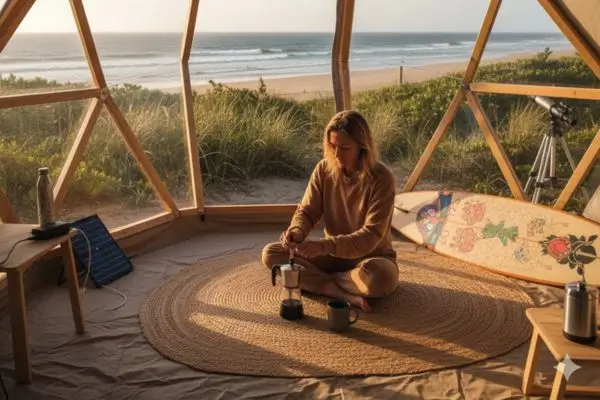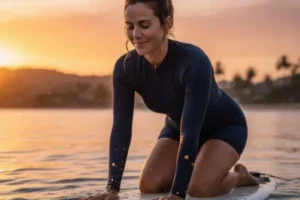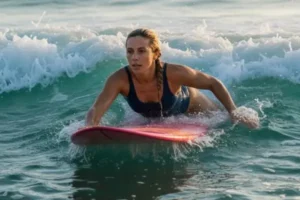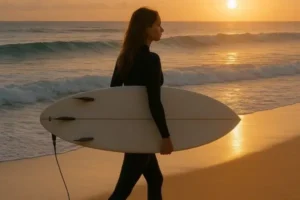Surfing has always been a celebration of nature — the dance between power and peace that happens where ocean meets land. But as more coastlines face the pressures of tourism and development, women surfers around the world are turning to a new type of experience: surfing in protected areas.
These destinations offer not just perfect waves, but the chance to reconnect with untouched nature while helping preserve it. For women seeking a deeper purpose behind every paddle-out, protected surf zones provide the ideal balance between adventure, awareness, and respect for the planet.
Understanding Protected Surf Zones
Protected areas are regions designated for the conservation of biodiversity, ecosystems, and cultural heritage. They can range from marine reserves and national parks to community-managed coastal sanctuaries.
Surfing in these regions often comes with rules that ensure the waves — and the ecosystems that create them — remain healthy. Restrictions may include limited visitor numbers, regulated surf zones, and eco-conscious infrastructure.
For women surfers, these regulations don’t limit the experience; they enhance it. They create an opportunity to connect with unspoiled landscapes, support sustainable tourism, and surf in places where nature truly sets the rhythm.
Why Protected Areas Are Ideal for Women Surfers
Protected surf areas provide more than environmental value — they foster community, safety, and empowerment.
- Cleaner oceans: With restricted waste and fishing activities, the water is often clearer and healthier.
- Stronger community focus: Many conservation zones are managed by local women or involve gender-inclusive sustainability projects.
- Educational opportunities: Visitors can participate in workshops about marine ecosystems, reef protection, or traditional surf culture.
- Balanced tourism: Limited visitor numbers mean more intimate sessions and less crowd pressure in the lineup.
These elements make protected surf zones perfect for women who appreciate surfing as a mindful and transformative experience.
Top Protected Surf Areas Around the World
1. Nosara, Costa Rica
Located within the Ostional Wildlife Refuge, Nosara is famous for its consistent waves and environmental ethics. Women-led eco retreats here combine yoga, surf lessons, and conservation volunteering — creating a holistic experience that supports both body and planet.
2. Mentawai Islands, Indonesia
While known for world-class breaks, several regions of the Mentawais now fall under local protection initiatives. Community-led surf tourism ensures visitors contribute to reef conservation and local livelihoods.
3. Hanalei Bay, Hawaii
Part of the Hanalei National Wildlife Refuge, this surf paradise blends heritage and protection. The bay’s management supports coral reef restoration while maintaining traditional Hawaiian cultural practices.
4. Peniche, Portugal
Home to Supertubos and part of the Berlengas Biosphere Reserve, Peniche integrates marine biodiversity conservation with sustainable surf tourism. Female surf instructors and eco surf schools are thriving here.
5. Jeffreys Bay, South Africa
Located near the protected Kabeljous Nature Reserve, Jeffreys Bay combines wild waves with wildlife conservation. Visiting surfers can participate in local reforestation and beach preservation programs.
Each of these destinations shows that conservation and surfing are not opposites — they’re partners in creating a sustainable future for the sport.
How to Surf Responsibly in Protected Areas
Surfing in a protected zone carries both privilege and responsibility. To ensure that your visit supports conservation rather than harms it, follow these simple but meaningful steps:
1. Respect Local Regulations
Always check if permits are required before entering a protected surf zone. Follow local guidelines about where to surf, where to walk, and what activities are restricted.
2. Support Local Guides and Communities
Hiring local female surf instructors or eco-guides not only enhances your experience but also ensures that your money stays within the community. Many of these programs directly fund conservation efforts.
3. Leave No Trace
Bring reusable bottles, eco sunscreen, and cloth bags. Never leave wax, plastic, or food waste behind. If you can, participate in organized beach cleanups or initiate small ones with fellow travelers.
4. Avoid Disturbing Wildlife
Protected areas are often home to endangered marine life. Stay clear of nesting zones, coral reefs, and marine mammals. Observing from a distance helps maintain their natural behaviors.
5. Travel Light, Offset Your Carbon
Choose minimal gear and offset the emissions from your flight by contributing to certified reforestation or ocean-based carbon removal projects.
Each of these actions builds a stronger bridge between surfing and environmental stewardship.
The Emotional Side of Eco Surf Travel
For many women, surfing in protected areas becomes more than a trip — it’s a renewal of values. These environments invite reflection, gratitude, and humility. The silence of dawn waves, the scent of salt and vegetation, the sight of nesting sea turtles — all remind surfers of how intertwined we are with the ocean’s pulse.
Surfing here isn’t about performance. It’s about participation — being part of something larger and more meaningful than the individual ride.
Inspiring Change Through Conscious Surfing
Women surfers are increasingly at the forefront of ocean activism, and surf adventures in protected areas play a key role in this shift. By choosing sustainable experiences, you set an example for others — proving that passion and preservation can coexist beautifully.
Some organizations now offer programs designed for women who want to blend surfing with environmental action. These trips often include eco-education, community engagement, and mentorship from other women leaders in the surf world.
When female surfers travel with awareness, they carry influence far beyond the beach — inspiring friends, families, and future generations to rethink how they interact with the planet.
Surfing as a Force for Preservation
Protected areas exist because people decided that some places are too precious to lose. As a woman surfer, choosing to ride those waves respectfully transforms you into a guardian of their future.
Every paddling stroke becomes a quiet promise — to the reefs, the forests, the birds, and the cultures that make each destination unique. Surfing in protected areas is not just about seeking peace and perfection; it’s about giving something back to the Earth that sustains the surf itself.
In every clean line you draw on the water, there’s a deeper message of harmony — a reminder that the best waves are those we preserve for others to ride after us.




